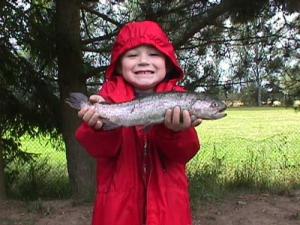Post
Michigan DNR Offers Trout Fishing Tips
Michigan Fishing Articles, Regional Fishing, United States Fishing Articles | Michigan theangler PM

Native to the Pacific watershed, rainbow trout came to Michigan when eggs were imported from California in 1876. First stocked in the Au Sable River, then four years later in the Lake Michigan watershed, rainbows can now be found in all corners of the state. Large specimens that inhabit the Great Lakes but travel inland to spawn in streams have come to be called steelhead.
Like any trout, stream rainbows can be caught by a variety of techniques; live bait, artificial lures and flies all produce. In large lakes, rainbows can be caught by trolling or by fishing with bait or jigging through the ice in winter. Though most commonly associated with clear-water lakes in northern Michigan, rainbow trout have been successfully stocked into a number of southern Michigan lakes as well, where they provide a unique fishery. Fishing after dark at the thermocline — the depth at which there is a major change in temperature — with live bait, salmon eggs or corn is the principle technique.
When many Great Lakes area anglers think about rainbows, however, they’re dreaming of steelhead, fish that are hatched (or stocked) in a river, migrate to out to the big water to mature, then return to their natal streams to reproduce. Although there is an open-water, off-shore fishery for steelhead in the summer in Lake Michigan, the bulk of anglers pursue them during their spawning runs, from the piers or in the streams. Steelhead begin filtering upstream in October and fishing for them continues through May, though between fish that have completed spawning (popularly called “drop-backs”) but have yet to migrate back out into the big lake and a few summer-run fish, there are almost always some steelhead in the streams.
Michigan is one of the best steelhead fishing states in the country. Virtually all Great Lake tributaries attract some steelhead with some of the best-known fisheries at the Manistee, Pere Marquette and St. Joseph Rivers in the Lake Michigan watershed, the Au Sable River off of Lake Huron and the Huron River in the Lake Erie watershed.
